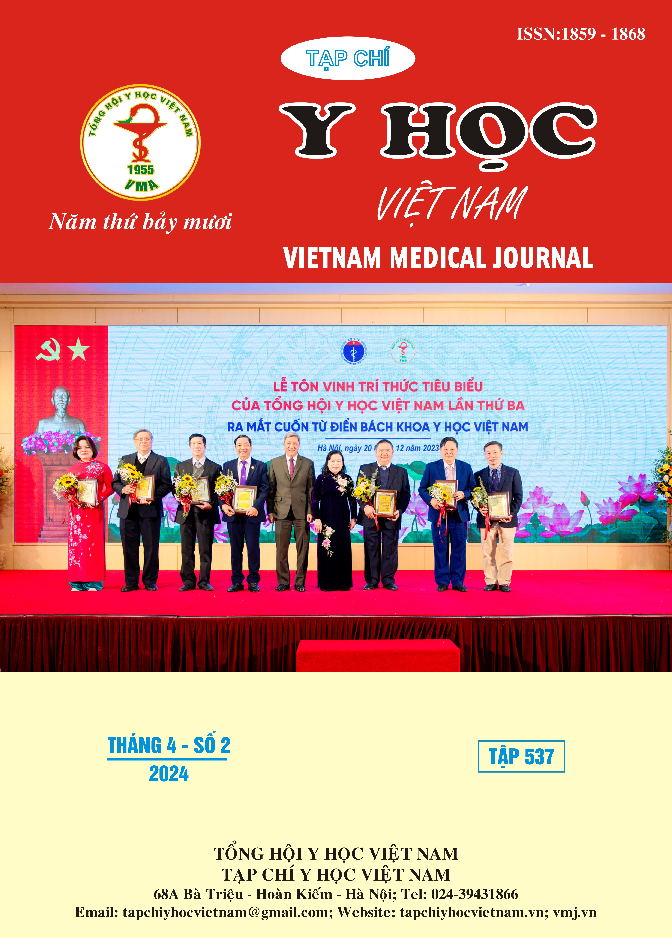SLEEP QUALITY AFTER CARPAL TUNNEL RELEASE
Main Article Content
Abstract
Objectives: To assess the improvement of sleep based on the Insomnia Severity Index (ISI) and the Pittsburgh Sleep Quality Index (PSQI) at 1 month, 3 months and 12 months after surgery for treating carpal tunnel syndrome. Subjects and methods:. A retrospective descriptive study of 71 cases and prospective longitudinal observational study of 33 cases of carpal tunnel disease with sleep disorders who underwent surgery to relieve compression of the median nerve from January 2019 to May 2022 at Military Hospital 175. Results and Conclusion: 1 month and 3 months after surgery, in the prospective group, ISI scores decreased to 14.67 ± 0.99 and 10.82 ± 1.13, respectively, and PSQI scores decreased to 9.36 ± 2.25, respectively. and 6.79 ± 1.34. In the retrospective group, 12 months after surgery, PSQI and ISI scores improved with scores of 2.99 ± 1.96 and 5.92 ± 1.36, respectively, and sleep efficiency ≥ 85% reached 98.59. % and 81.82% in both groups at the last follow-up visit. The sleep of patients with carpal tunnel syndrome after surgery has improved well according to the PSQI and ISI scales, the change is statistically significant.
Article Details
Keywords
Sleep, ISI, PSQI, carpal tunnel syndrome.
References
2. Đặng Hoàng Giang (2014), Kết quả điều trị phẫu thuật hội chứng ống cổ tay, Luận văn tốt nghiệp bác sĩ nội trú, Trường Đại học Y Hà Nội
3. Lê Thị Liễu (2018), Nghiên cứu đặc điểm lâm sàng, điện cơ và siêu âm Doppler năng lượng trong hội chứng ống cổ tay, Luận án tiến sĩ y học, Trường Đại học Y Hà Nội
4. Tulipan J.E. (2017), “Prospective evaluation of sleep improvement following carpal tunnel release surgery”, The Journal of Hand Surgery, 42(5):390.e1-390.e6
5. Gaspar M.P. (2019), “Sleep disturbance and response to surgical decompression in patients with carpal tunnel syndrome: a prospective randomized pilot comparison of open versus endoscopic release”, Acta Biomed, 90(1):92-96
6. Lý Duy Hưng (2008), Nghiên cứu đặc điểm lâm sàng rối loạn giấc ngủ trong các rối loạn liên quan với stress, Luận văn thạc sĩ y học, Trường Đại học Y Hà Nội
7. Phan Quang Trí (2018), Phác đồ điều trị của bệnh viện Chấn thương chỉnh hình, Nhà xuất bản Giáo dục Việt Nam, 1: 296-298
8. The American Academy of Neurology (1993), “Practice parameter for carpal tunnel syndrome. (Summary statement)”, Report of the Quality Standards Subcommittee of the American Academy of Neurology, 43(11):2406-2409


